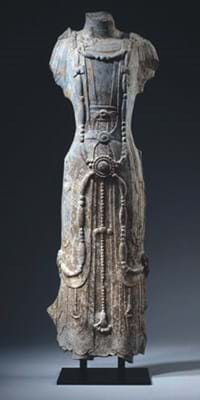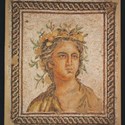Every year when it comes to previewing this fair, which runs at the Maastricht Exhibition and Congress Centre (MECC) from March 4 to 13 (with a vernissage on March 3), all commentators tend to run out of superlatives. And I can guarantee this is the only fair where that happens. With the perennial problem of finding fresh, often museum-quality stock to bring onto the market, the only question about Maastricht - and it's an annual one - is can they keep up the quality? But they do.
And, regarding its status, it is telling that this is not a self regarding event. In its publicity it just once simply refers to itself as "the world's leading art fair". Other quality fairs blow their own trumpets far too loudly throughout most of their pre-publicity and continually bang on about becoming another Maastricht.
But they won't, and internationally the consensus among collectors, dealers and museum people is that this fair simply has no rivals and, in the current climate, is, if anything, moving further away from any possible contenders. This year 202 of the world's very top dealers will be displaying their wares. Although by no means every stand will have the kind of museum-quality associated with Maastricht, many will.
The assemblage is truly international with the dealers coming from 14 countries. This year Acquavella from New York return after a three-year absence with their classical Modern and Contemporary European and American art.
Two London dealers make their debut - Blairman with 19th century applied arts, and Rupert Wace, the extremely busy antiquities specialist.
Newcomers from Europe will be Bulgari from Rome with fine jewellery; Karsten Greve from Cologne with 20th century fine art; Amedeo Montanari from Paris with antique frames; Segoura from Paris with 18th century French furniture and objects; and Carolle Thibault-Pomerantz from Paris with 18th century to Deco French wall paintings.
I will not attempt to tabulate the proffered highlights of the fair. Suffice to say that at whatever level, this is the fair for which the exhibitors save the very best pieces. This is why on vernissage day the small Maastricht airport has its annual traffic jam with celebrities, seriously rich collectors and dealers, and museum curators all flying in.
That is one reason why it is always difficult to gauge actual business achieved at this fair. After-sales are all-important and museums, in particular, often take many months to affirm an acquisition.
But it became clear that at the past two Maastrichts, which were held during arguably the most difficult times many in the trade can remember, much business was achieved. And, of course, here most business is seriously high end.
For those who just come to look, this fair is proving an almost unwieldy attraction. Last year the gate of 75,000 was 15 per cent up on the previous year, and even the MECC cannot easily accommodate such a throng.
For 2005, there is a new design by the fair architect Tom Postma of Amsterdam, who has been working with British exhibition designer David Bentheim.
Also this year there is a special loan exhibition of 35 Old Masters and sculptures from the Detroit Institute of Arts, many of them bought at TEFAF.
I greatly look forward to reporting whether the best assembly of art and antiques outside of the world's museums actually finds buyers and not just admirers.
That is the only real worry about this fair, as is so often expressed by exhibitors. It may be museum-quality but, like every other fair, it is not an exhibition. It is a marketplace.
Admission is €35.
Can Maastricht really maintain this high quality? …yes, it certainly can!
MARCH in the small and ancient Dutch city of Maastricht is not just the hub of the international art world for the duration of the world’s top fair, TEFAF Maastricht. It has an impact which reverberates throughout the whole year and is a commercial event unparalleled in its quality and expertise.








